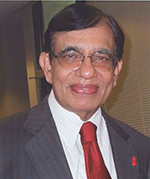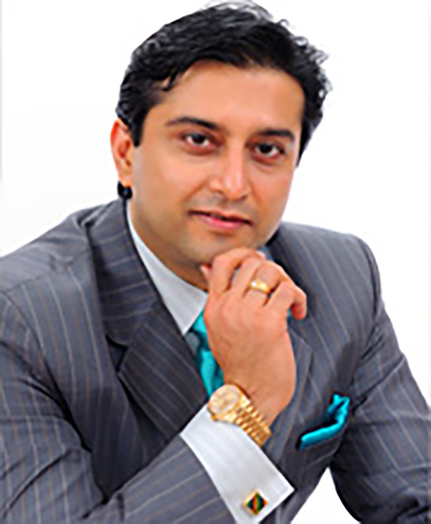
Lifestyle Medicine – Part 3
‘The Healing Power of Human Connection’

Growing up in India as a member of a close-knit family and part of local community networks, I enjoyed the interpersonal connection and social support we had and never was there a problem of loneliness or isolation. Often, neighbors dropped by spontaneously, bringing a sample dish or simply for a chit chat. And we referred the senior neighbors and friends, as uncle or aunty, which gave everybody a feeling of closeness and friendship. Things have drastically changed now, especially in the western world. Many children grow up in single-parent homes or, if both parents are working, the children are being brought up by nannies. Feelings of isolation, loneliness and related depression have become all too common. Many elderly people live alone and hence, depression is one of the common problems we encounter in these people.
Recent studies found, “Social isolation significantly increased a person's risk of premature death from all causes, a risk that may rival those of smoking, obesity, and physical inactivity. It was also associated with nearly 50 percent increased risk of dementia.” A well-known research review found that lack of friends and just living alone were risk factors for early mortality, with an increased likelihood of death ranging from 26 to 32 percent compared to the normal.
So, what is the leading cause of loneliness? And how can you tackle the problem? The most prevalent cause is just the sense of being disconnected. Many young adults get lonely when they feel unable to express themselves or talk about their issues. Some feel lonely when they acquire the feeling ‘they did not matter to others and were not understood.’ Loneliness results in elevated levels of anxiety and depression, deterioration of mental health, dietary irregularities, less physical activity and increased suicidal ideation. Research has also shown that depression can lead to people engaging in more adverse health behaviors such as smoking and alcoholism, as well as not complying with prescribed medical treatments. Depression is a common cause of obesity in the U.S. but the reverse is true in India – many depressed and lonely people lose considerable weight. Either way, it is bad. Studies have shown, “People 60 years and older who reported struggling with loneliness faced an increased risk of mortality compared with participants who do not report being lonely (22.8 vs. 14.2 percent).” Our former U.S. Surgeon General Dr. Vivek Murthy noted, “During my years of caring for patients, the most common pathology I saw was not heart disease or diabetes; it was loneliness.” Now you know how prevalent the problem is.
So, how can you overcome the feeling of loneliness, be fully functional and, lead a normal life? According to Mally Kartha, a Florida licensed independent clinical social worker, who has a vast experience in dealing with patients living alone, says: “As you grow older and, especially if you live alone, you need to become more flexible and open-minded and, accept what you like but learn to let go when needed. Try to make new connections and friendships because we live in an interconnected world. That’s the sobering truth.” How true! Most communities you live in have programs to keep their residents active and involved like yoga and Tai chi sessions, concerts, movies, lectures, ‘Meet and Greet’ programs, etc., that give opportunities to interact with others and to develop friendship.
Developing interpersonal connections and friendships is the key factor. Unfortunately, there is no drug treatment for loneliness. Many communities have their own ‘Togetherness programs’ for those who want to know others in the community and make friends. Religious institutions like temples and churches have prayer meetings, volunteer opportunities and other programs in which one can participate and develop friendships. In the schools too, for children lacking social skills, there are “special programs and practices that are integrated into the academic experience to develop a systematic approach to healthy social and emotional development for everyone involved.” Ultimately, developing a circle of friends that you can rely on and volunteering for whatever programs you like in the community will go a long way to improve one’s isolation. And don’t forget the importance of social media that connects us with friends and family.
For further reading, suggest: “Together – The Healing power of Human Connection” by Vivek Murthy, M.D.
M.P. Ravindra Nathan, M.D., is a cardiologist and Emeritus Editor of AAPI Journal. For further reading, “Second Chance - A Sister’s Act of Love” by Dr. Nathan from Outskirts Press, can be found at www.amazon.com
EYE CARE
THAT’S IT? AM, I DONE?

In this column, I will share an important category of patients who reach out to us from all over the world after repeatedly being told that nothing can be done for them.
These are not patients who are called “not a candidate” because of thin cornea, high astigmatism or dry eyes who their Lasik surgeons could not help, or patients who have complex cataracts, Keratoconus or previous surgeries such as radial keratotomy, etc., and are labeled as impossible. In past columns in this publication, I have shared with you that there is no such thing as “not a candidate” and all patients with the above-mentioned conditions can be corrected, and in most cases, to life without glasses or contact lenses.
I'm referring to patients who may have retinal or optic nerve conditions like diabetic retinopathy, glaucoma or macular degeneration, or any such condition where their vision is permanently limited.
These patients most usually get filtered through cookie-cutter screenings into “not a candidate” categories, accept the label and stay with limited vision for the rest of their lives.
Certainly, the conditions of retina and glaucoma are irreversible, in most cases, and therefore should be vigilantly evaluated at regular intervals to make sure that the disease doesn't worsen. At the same time, there are ongoing newer therapies to improve damage (example, intravitreal injections for certain age-related macular degenerations), which could result in stabilizing or mildly improving vision, according to individual severity status. Eye doctors who relegate these patients to no further improvement in vision and hand them over to a lifetime of dependence on glasses and contact lenses are doing anything less than an excellent job of patient care. But I personally feel that these are the very patients who deserve an extremely strong fight from eye surgeons to get them every little drop of vision possible in their already limited-potential eyes.
It is important to understand that the glaucoma, retina or macular condition needs to be stable and provenly steady over time. Then one can determine what final vision potential the patient may have and then proceed with any optical element in the eye which could yield itself to surgery and bring forth any more vision possible.
Think about this as an analogy, for example, as the film (retina) of the camera is permanently damaged, so no matter what you do, the image created will be defective and limited in quantity and quality, including field of vision.
But for the same reason, once you determine that that film of the camera is damaged but at least stable, the rest of the optical elements of the eyes must be tackled by refractive surgeries like Lasik (or no blade, LaZrPlastique®), lens-based techniques like cataract surgery (custom-designed LenzOplastique®) or cornea-based techniques (Corneoplastique®). Any possible drops of vision could offer a life without glasses/lenses and thus freedom, which to a normal patient may not be significant, but to this particular patient means everything between a fully dependent to an independent lifestyle.
Several technologies today can allow the eye doctor to determine your vision potential despite a limiting eye condition; so, please encourage the surgeon to look for the same.
For example, despite having glaucoma, you may also suffer from existing astigmatism or near sightedness, maybe far sightedness or need reading glasses and, of course, age-related cataracts. Take advantage of modern technologies and proceed with options for vision improvement being fully aware that the outcome will be limited based on your ocular disease, compared to a normal eye.
Additionally, you might have dry eyes that are bothering and impacting your lifestyle, or red- looking eyes from pterygium or scars on your cornea. All can be corrected to at least decrease the burden of an uncomfortable and yet visually limited eye.